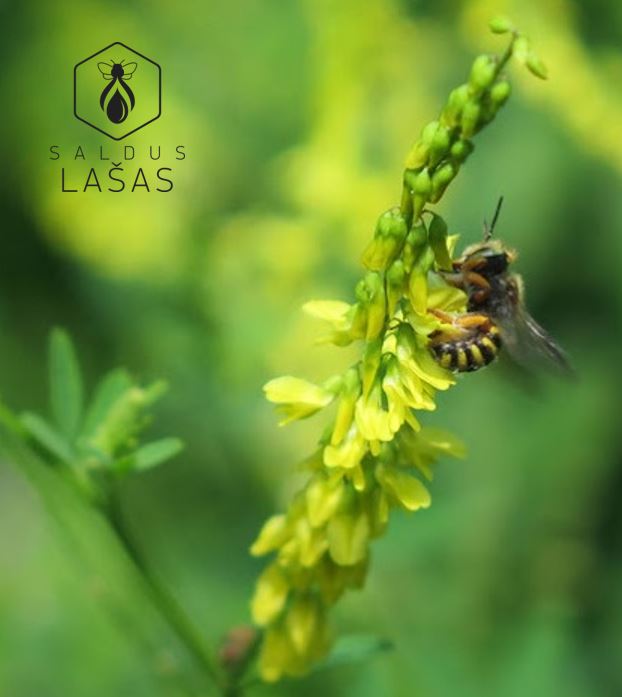Bees, Honey, Bee Pollen, Recipes, Work In The Apiary
Yellow Sweet Clover – Melonotus Officinalis
Leaves – Alternate, trifoliolate, stipulate. Stipules to 5mm long, subulate. Leaflets with petiolules. Center leaf with petiolule to 5mm long. Lateral leaflets with petiolules to +/-1mm long. All leaflets variable in shape from oblong to oblanceolate, serrulate, typically truncate at apex and mucronate, glabrous to sparse pubescent.
Inflorescence – Axillary racemes near apex of stems. Peduncles sparsely appressed pubescent. Raceme to +/- 8cm long, indeterminate, +/- 50 flowered. Pedicels 2.5mm long, pilose, subtended by tiny lanate subulate bract to 1.5mm long.
Flowers – Corolla yellow, papilionaceous. Standard 3.5 – 4mm broad, 5 – 6mm long. Stamens diadelphous, 4mm long. Filaments glabrous. Anthers yellow. Ovary green, 1.2mm long, glabrous. Style glabrous, 2.7mm long. Calyx tubular, + 2mm long, 5 – toothed. Teeth subequal, +/- 1mm long. Fruit to 5mm long, compressed, glabrous.
Flowering – May – October.
It’s hard to miss this plant in early summer as it is growing nearly everywhere. The yellow flowers are a big favorite of bees and the genus name means “Honey Lotus”.
As noted above, the plant produces a musky scent when cut or crushed and the scent can make some people nauseous. This scent is caused by coumarins contained in the plant. Personally, I get a headache if I pass through a dense area of the plants that has recently been cut. At one time the plant was used as an insect repellent on textiles.
Most important of all, I think, is the fact that sweet clover is a fantastic honey plant – one of the best in the world.
Beekeepers in ancient Greece recognized sweet clover as a wonderful honey plant. It still attracts bees by the millions to the steep, dry hillsides where it flourishes. Long after Aristotle swallowed his last chunk of clover honeycomb, scientists searched for a scientific name to tag to sweet clover. They chose Melilotus – from Greek words that celebrate honey (meli-) and lotus, which they somehow thought sweet clover resembles. (Even scientists goof up occasionally.) Sweet clover has a long history as a renowned honey plant.
How good is it? Melilotus nectar averages 52% sugar and just 48% water. Most nectar is 20% sugar and 80% water. The 52% – sugary nectar was sampled in Lithuania on a dry summer day. You can see the advantage to the bee – each belly-load carries twice the sugar as typically found in other honey plants. Honey supers fill twice as fast. It takes fewer trips and bees process it more easily during nectar’s conversion into honey.
Sweet clover yields enough nectar to make 500 to 700 kg. of honey per hectare. Millions of kilos of honey are lost each year, simply because there are not enough honey bees to gather all the nectar secreted by the world’s sweet clover. For beekeepers, dropping 20 colonies near a section of sweet clover doesn’t begin to touch its potential.



